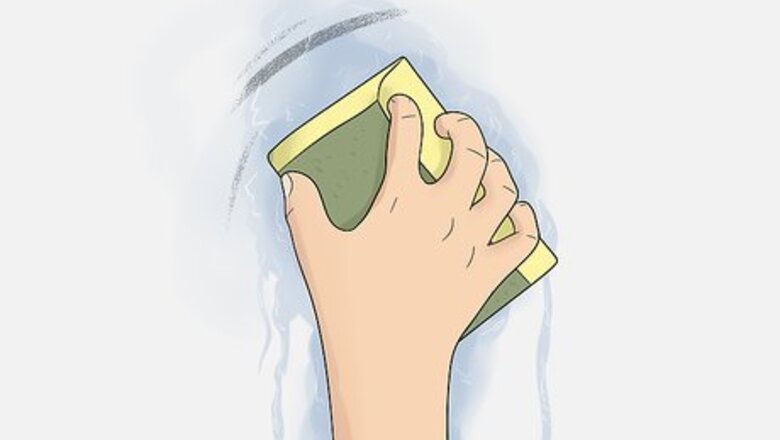
views
Scrubbing Marks off Paint
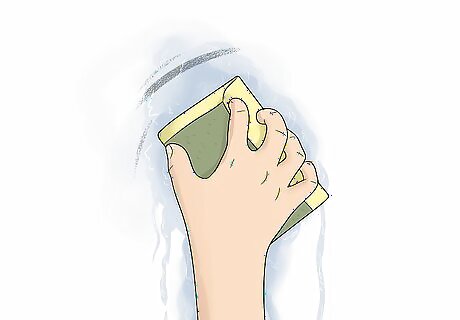
Wipe simple scuffs with water and a kitchen sponge. Most scuff marks come off with water and a good scrubbing. Start by wetting a clean sponge or cloth with warm water. Wring it out so it’s only damp rather than soaked. Start off rubbing lightly and see if the mark starts disappearing. If it doesn’t start coming off right away, then gradually increase the pressure until it does. Then dry the area with a clean, dry cloth. You can also try spraying the mark with an all-purpose cleaner and scrubbing it with a cloth or sponge. If you have flat paint on your wall, make sure to squeeze the sponge out well. This type of paint isn’t water-resistant, so you could strip the paint if you use a soaked sponge. Make sure the sponge or cloth you use is clean, or you could leave stains on the wall. Scrub in several different directions to hit the stain from multiple sides and remove it completely. If you’re using a kitchen sponge, only use the non-abrasive side. The rough side could damage the paint. If water starts dripping down the wall, then the sponge is too wet and could leave water marks. Wring it out some more and scrub again.
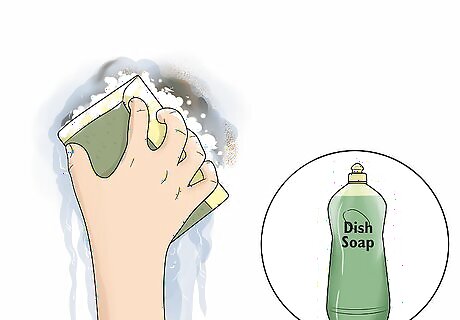
Add a drop of dishwashing soap for grease stains. If the stain won’t come off or there is some left behind, then try using a mild cleaning agent. Squeeze a small drop of dish soap onto the sponge and rub it in. Then scrub the mark with increasing pressure again. When you’re done, rinse the area with a damp cloth. If you know a mark was caused by grease or food, then use dish soap first.
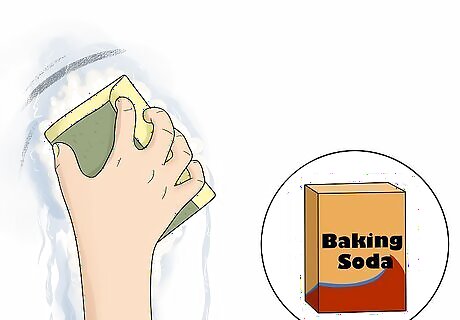
Sprinkle baking soda on a damp sponge for tough scuff marks. If some scuffs won't come off with simple scrubbing, then wet and wring out a kitchen sponge. Sprinkle 1 tsp (6 g) onto the non-abrasive side of the sponge. Rub it into the sponge with your finger. Then scrub the scuff mark. Use increasing pressure to work the scuff mark out. Then wipe the area with a dry cloth. Work in several different directions to get the mark off. Start with a circular motion, then go back and forth or side to side to hit the scuff from all directions.
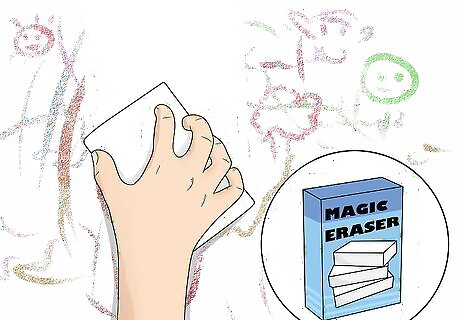
Use a Magic Eraser to get pencil and crayon marks off. If your kids decided to draw on the walls, then melamine foam, or a Magic Eraser, can do the trick. Wet the product and wring it out. Then scrub all the stained areas in a circular motion. A Magic Eraser can leave marks on flat paint, so don't use this product if you have flat paint in the area. If you aren't sure what type of paint you have, do a quick spot test. Scrub a hidden spot, like an area behind the couch, and see if the paint loses any of its shine or looks discolored. If not, then use the Magic Eraser on the stains.
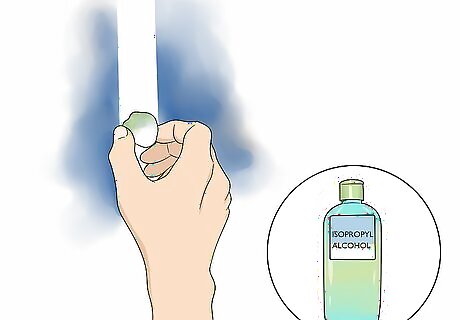
Remove marker and ink with rubbing alcohol. These stains are a bit harder to get out, so use a stronger chemical. Pour some rubbing alcohol onto a cotton ball. Scrub the stain in a circular motion. Use increasing pressure until the stain starts coming off. Always spot-test with alcohol before using it in large areas. Dab a little in a hidden spot and rub it in. Wait a few minutes and see if the wall looks discolored at all. If not, then it's safe to use the alcohol.
Removing Marks on Wallpaper
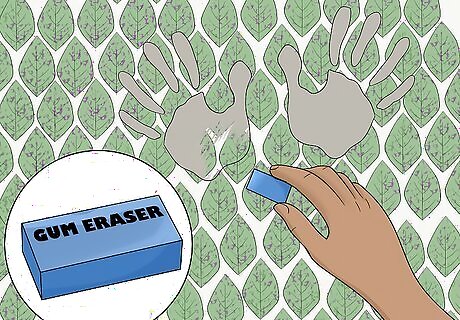
Rub scuffs, pencil marks, or dirty handprints with a gum eraser. These light marks can literally be erased from the wall. Press down gently with a gum eraser and work it back and forth. Apply more pressure if the mark isn’t coming off. Continue rubbing until the mark comes off. Gum erasers are widely available at hardware or craft stores. Avoid using a pencil eraser on your wall. These are usually dirty and can leave more marks behind.
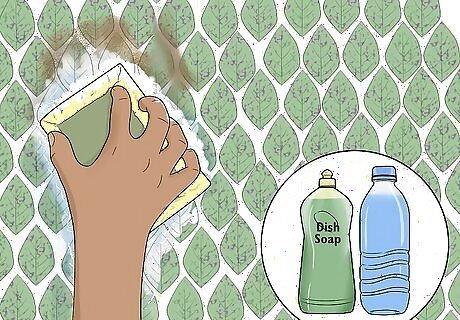
Scrub grease with water and dish soap. Pour warm water into a bowl and add a drop of dish soap. Mix the solution together to make suds. Then dip a sponge in and wring it out. Scrub any marks on the wall in a circular motion until they come off. Then wipe the area with a dry cloth. Wring the sponge out very well, because excess moisture causes wallpaper to bubble up. If any water drips, wipe it up quickly and wring the sponge out some more. Some wallpaper isn’t washable. To check, rub a small amount of the cleaning solution in a hidden spot and wipe it away. Wait and see if any discoloration occurs. If not, then your wallpaper is washable.
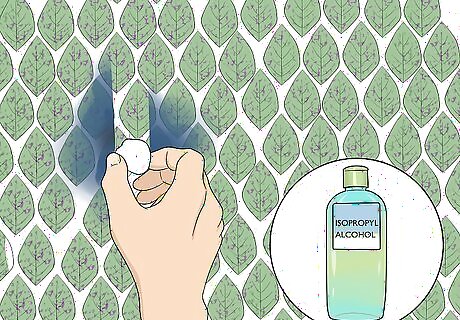
Remove ink stains with rubbing alcohol. Pour some alcohol onto a cotton ball. Squeeze the cotton so the excess alcohol leaks out. Scrub the stain in a circular motion. Use increasing pressure until the stain starts coming off. Always spot-test with alcohol before using it on wallpaper. Dab a little in a hidden spot and rub it in. Wait a few minutes and see if the wallpaper looks discolored at all. If not, then it's safe to use the alcohol.
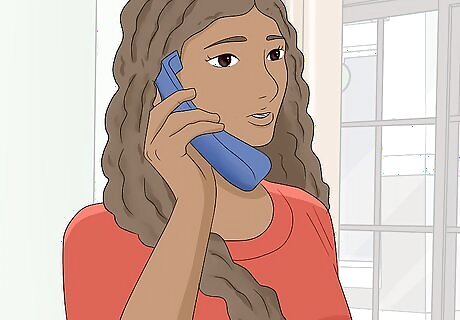
Contact the wallpaper manufacturer for set-in stains that won’t come off. If you’ve tried other cleaning methods and the stain won’t come off, then contact the manufacturer before trying tougher cleaning methods. Different wallpapers are made with different materials, and solvents or chemicals could ruin some types. Contact the manufacturer and explain the stain. They can give you recommendations on what cleaning agent to use, or tell you that the stain won’t come off without replacing the wallpaper. Some additional cleaning methods are using bleach or vinegar. Don’t try these without the manufacturer’s approval.
Scrubbing Mold Stains
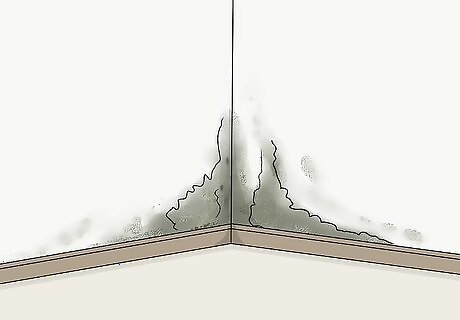
Identify mold stains by their appearance, location, and texture. Black mold is another common cause for black wall stains. It usually grows in circular blotches, and feels slimy to the touch. It also gives off a damp, musty smell. If you see these signs along with black wall spots, then the culprit is probably mold. Common locations for black mold are around pipes, room corners, and materials containing cellulose like rugs or mats. If your home generally smells musty but you don’t see any stains, then you may have mold growing inside the walls. Consider calling in a contractor to inspect your home.
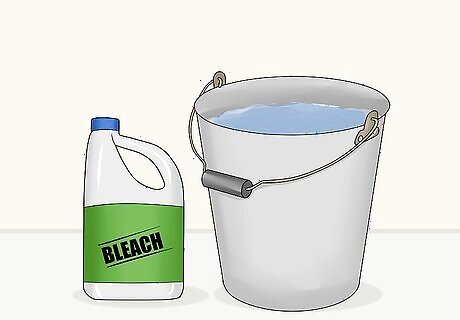
Mix a bleach and water cleaning solution. Fill a bucket with 1 gallon (3.8 L) of warm water. Then mix in 1 cup (0.24 L) of bleach. Never mix bleach with other household cleaners, especially ammonia. This can produce toxic fumes. Wear rubber gloves and goggles when handling bleach to protect yourself. Avoid splashing it on your clothes or carpets.
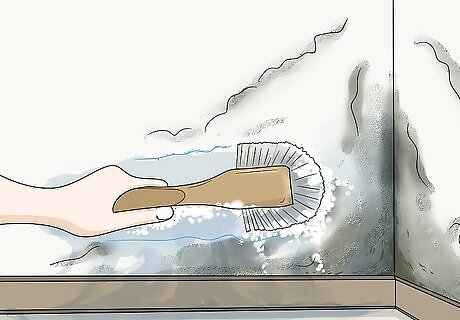
Scrub the stain with the cleaning solution and a stiff brush. Dip the brush in and let it drip over the bucket for a minute. Then scrub the stain with increasing pressure. When the mold starts coming off, then stick with that pressure. Scrub from multiple different directions to work all the mold off. Start with back and forth, then switch to side to side, and finally to a circular motion. This method also works on wallpaper, but make sure you wring out the brush well or the wallpaper could bubble up. If mold is appearing on your wallpaper, there may be more growth underneath it. You should consider peeling it back around that spot to check.
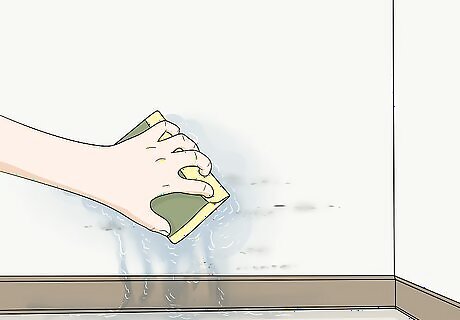
Rinse the area with a damp sponge. Bleach left on the walls can cause stains, so rinse the area thoroughly. Dip a sponge in to clean water and wring it out. Then rub all the spots you placed cleaner on to remove it. Don’t use a sponge that’s soaked. If water starts dripping down the wall, then wring it out some more. Remember to rinse any spots where the cleaning solution dripped as well.
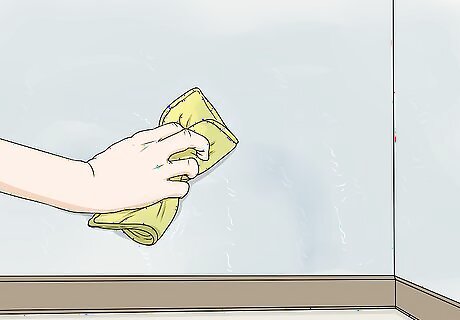
Rub off all the water with a dry cloth. Don’t leave any moist spots on the wall. Take a new, dry cloth and wipe the entire area down. Make sure you get all the spots where water may have dripped while you were cleaning. Removing all the water is especially important with a mold problem because moisture encourages further mold growth.
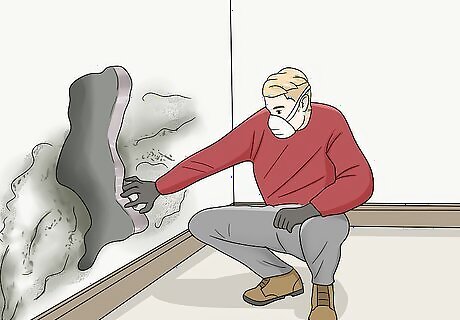
Have a contractor inspect your home if mold stains keep appearing. If mold stains are a persistent problem, then the conditions in your home are probably contributing to it. You may have a water leak or too much humidity in your home. Have a professional contractor come in and inspect your home to find the root cause of the mold growth. Using a dehumidifier is a common solution for mold growth, because moist conditions help mold grow. If the contractor finds any water leaks, fix them right away.




















Comments
0 comment